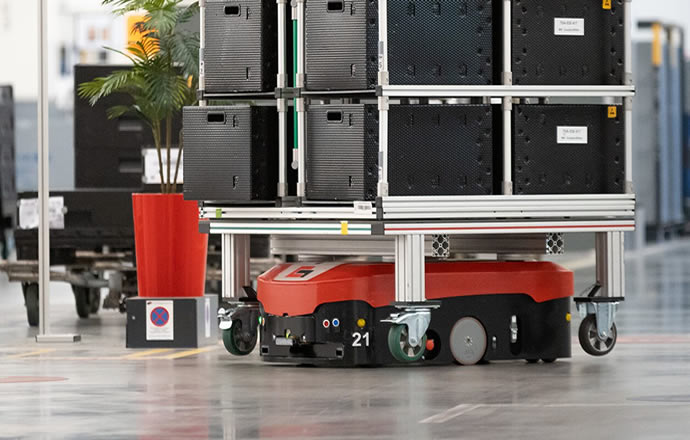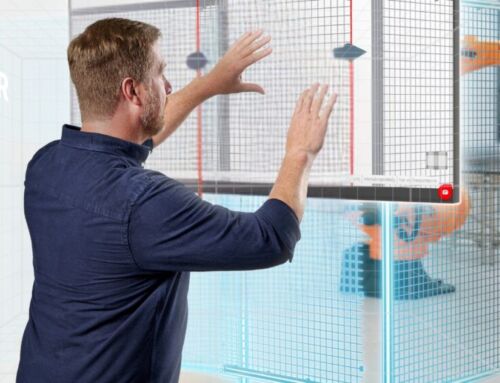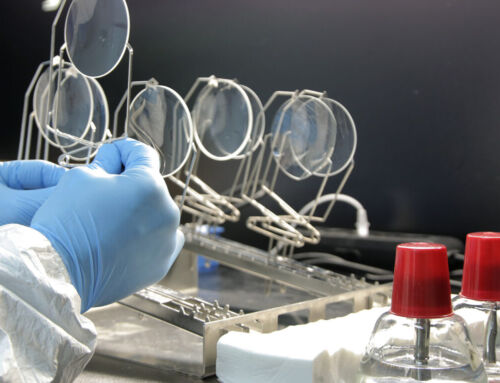5S and Poka-Yoke are two highly effective methods of visual management.
As we’ve already shown in the first part of our series, visual management plays an extremely important role in lean production, with the use of optical signals enabling staff without prior knowledge to detect problems straight away. Using symbols, colors, graphics or signal lights provides a level of clarity that you just cannot achieve with written text, thereby ensuring errors can be quickly flagged up and transparency created. Visual management serves another purpose, though. The transparency it provides also spurs staff on to drive forward the continuous improvement process (CIP). For this second part of our series, we’ve decided to take a fresh look at the two well-known lean methods of 5S and Poka-Yoke – this time focusing on the visual aspects.
Bringing (visual) order with 5S
5S is one of the best-known methods of visual management. The underlying aim is to create a standardized industrial work bench that is clean, well organized and safe. Besides helping staff keep on top of things, an orderly workplace also boosts efficiency and lowers the risk of occupational accidents. To make this a reality, the 5S principle advocates five individual steps all beginning with S – hence the catchy name. The steps are as follows:
- Seiri (sort): Removing everything you don’t need at that very moment.
- Seiton (set in order): Arranging and labeling working materials based on ergonomic principles.
- Seiso (shine): Thoroughly cleaning the workplace, because cleaning always entails a detailed inspection.
- Seiketsu (standardization): Ensuring steps 1 to 3 become second nature.
- Shitsuke (sustain): Adhering to all rules and continuously improving the workplace and/or workflow.
The first step also covers the red tag method, which involves labeling all objects at the workplace with a red dot or ticket and placing them in a dedicated “red tag area”. Whenever an individual object is required, the red label is removed, meaning you can find out for certain which objects are no longer needed.
A record is also kept of how often they are used. Based on this information, you can decide what to do with a specific object, as illustrated in the table below.
| How often do you use it? | What you should do with it |
|---|---|
| Never | Give it away, sell it or bin it |
| Once or twice a year | Store it far away |
| Once a month | Store it in the building |
| Once a week | Store in the vicinity |
| Once a day or more | Store at the work bench |
Henry Ford’s CANDO philosophy – the origin of 5S?
The idea behind 5S isn’t all that new. These days, most lean experts agree that Toyota drew inspiration from the CANDO method developed by Henry Ford (1863-1947), which is believed to have been in use at Ford plants even before 1920. The acronym CANDO stands for Cleaning up, Arranging, Neatness, Discipline and Ongoing improvement. It doesn’t take much to spot similarities between the two methods. In fact, Ford was visited by a team from Toyota in 1950, and then by Taiichi Ohno – a founding father of the Toyota Production System – six years later. In other words, the impact CANDO has had on the 5S methodology is not something to be ignored.
Targeted error prevention with Poka-Yoke
Poka-Yoke translates as “prevention of carelessness”. If production systems are planned in line with Poka-Yoke methodology, staff are less likely to make inadvertent mistakes or random errors. By proactively implementing preventive measures, processes can be designed in a way that ensures errors are anticipated at the early planning stage and thus avoided as far as possible. There are actually two different types of Poka-Yoke – hard and soft. The latter focuses on highlighting a potential error, whilst the former prevents mistakes from being made in the first place.
Poka-Yoke usually, but not always, takes the form of visual signals, making it a standard tool for putting visual management into practice. Examples of Poka-Yoke based on visual elements include:
- Sizes
- Same material
- Colors
- Checklists
- Lights
- Mechanically locked connections
Ultimately, using Poka-Yoke specifically helps staff to concentrate more on their work and avoid mistakes when operating equipment, thereby reducing the risk of disruptions.
.









